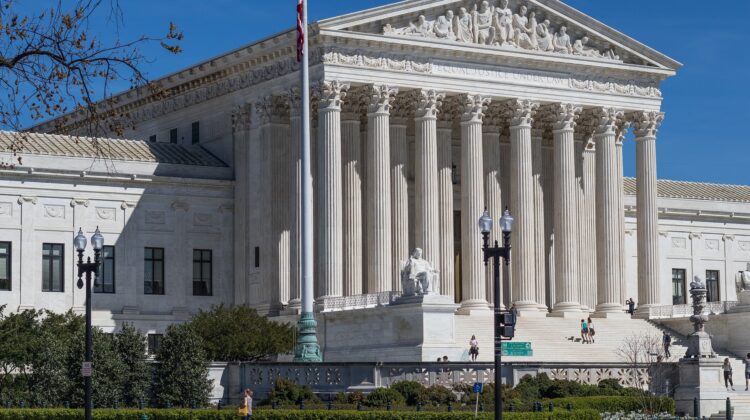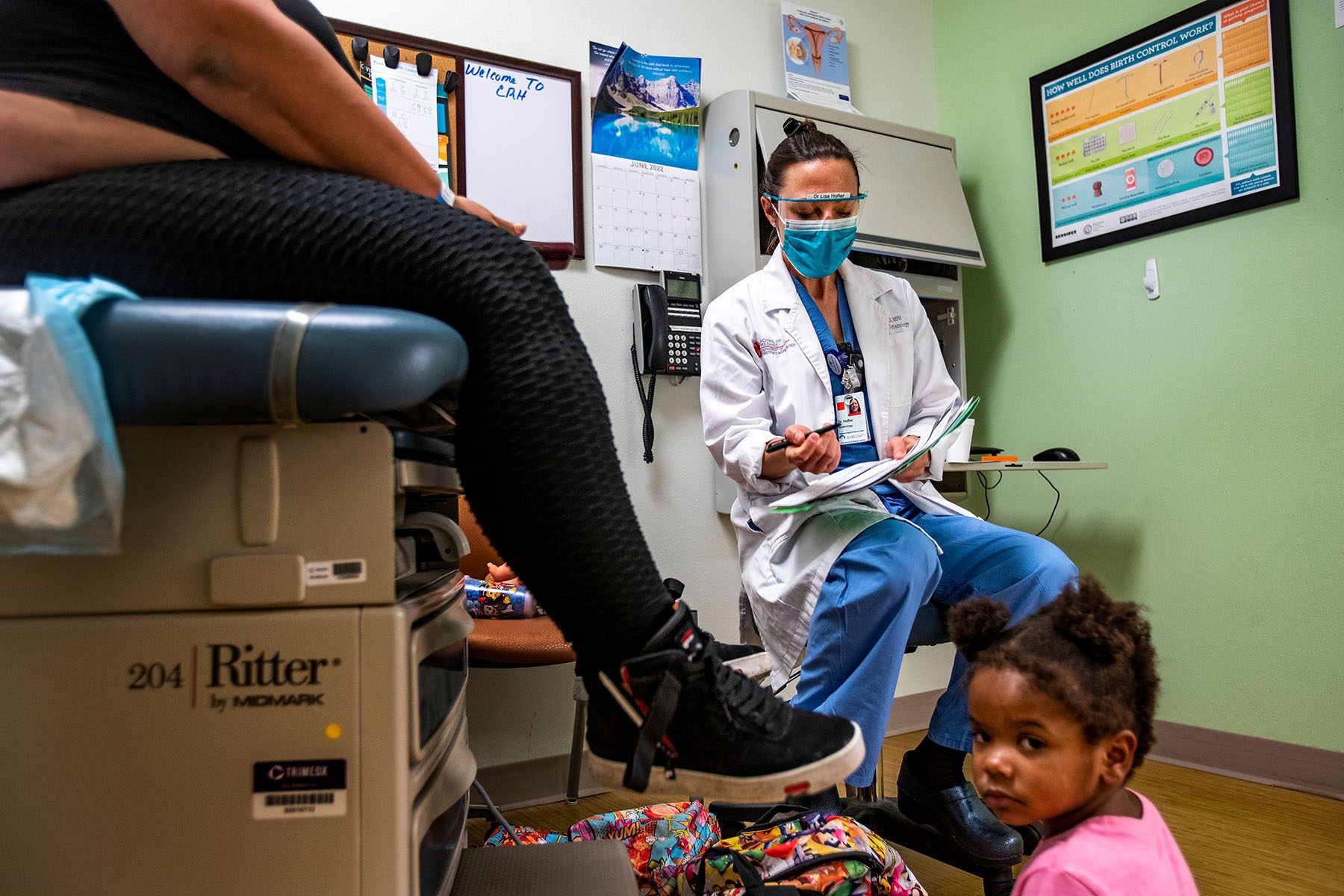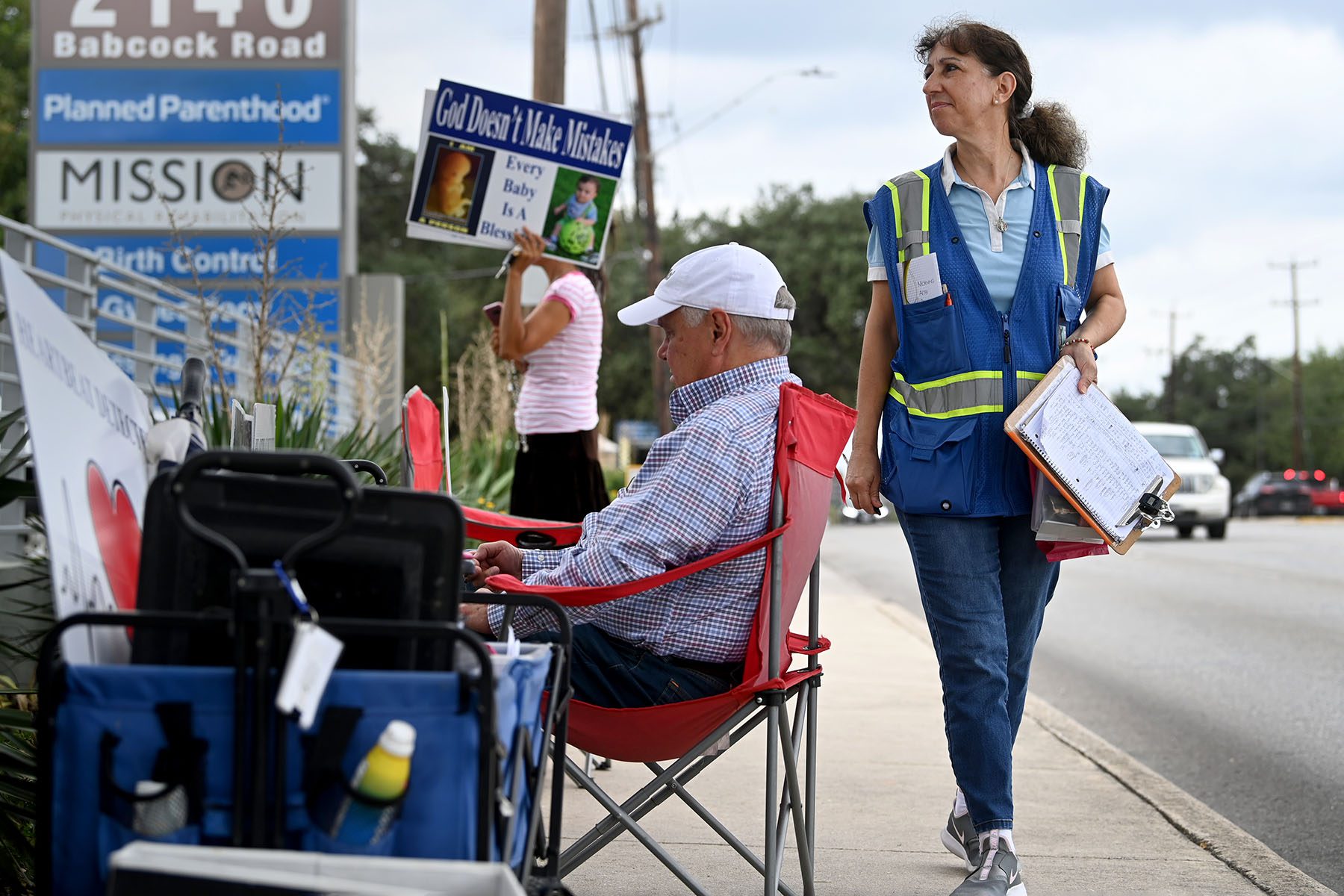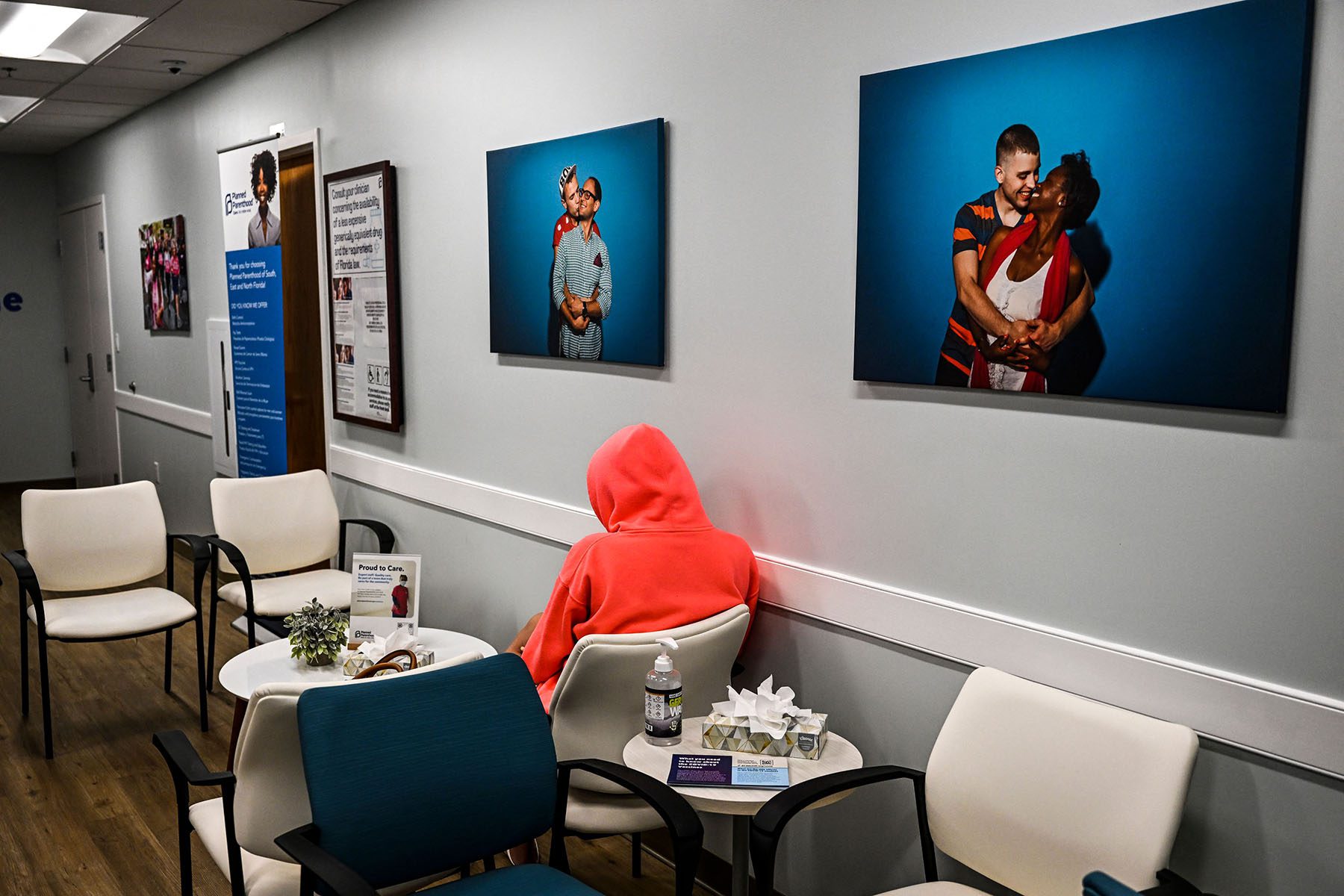
It’s been 100 days since Dobbs. What has changed?
Analysis | The ruling on abortion has changed the country, impacting those already most vulnerable and unleashing a new political energy.
Originally published by The 19th
Sunday marks 100 days since the Supreme Court’s seismic decision in the Dobbs v. Jackson Women’s Health Organization case, ending a nearly 50-year precedent of federal protections for abortion access in America established by the court’s 1973 decision in the Roe v. Wade case.
In the months that have followed, what can be described only as chaos has unfolded at the state level, with trigger laws passed in advance of the ruling taking effect or facing legal challenges — or sometimes both — leaving patients and physicians to navigate a complicated and confusing landscape.
The decision has also galvanized voters — many of them women, both those born before Roe and after it — to register in huge numbers for the November midterms. And in Kansas, voters last month roundly rejected a ballot initiative that would’ve allowed state lawmakers to end abortion access. Candidates of both parties are campaigning on their positions on the issue, which has taken center stage headed into this fall’s elections.
The abortion fight was formerly delineated as “before and after Roe.” Now, it is “before and after Dobbs.” Where are we as a country and a democracy at this milestone? I talked to several experts for their perspective on what we’re already learning about the implications of this landmark decision.
Last September, 40 deans, department chairs and scholars from leading research institutions who focus on health care policy and law submitted a friend-of-the-court brief in the Dobbs case, analyzing “Medicaid’s role as the country’s leading health insurer for millions of vulnerable pregnant women, children, people with disabilities, and other individuals who face systemic barriers to essential health care services and treatments.”
Sara Rosenbaum, a health lawyer and professor of public health at George Washington University, was among those who signed onto the brief. A year later, she said the harms she and her colleagues laid out — particularly the disparate impact on marginalized people — are already beginning to come to pass.
“We’ve never lived through anything like this,” said Rosenbaum, who is also a grandmother of two.
“We are now living in a world in which if my daughter was a resident of Texas or Oklahoma or Tennessee or Idaho or any of the states with these bans, I would tell her: Do not get pregnant,” she continued. “If she were a physician, I would tell her: Do not practice obstetrics or gynecology. You are suddenly in a world that is impossible to navigate, either as a patient or a physician. We have made the world completely unsafe for people who want to have a baby or who practice in a lot of states.”
A lot of those states already had major restrictions on providers — restrictions that disproportionately impacted people of color and LGBTQ+ people. They were part of a half-century-long battle to end abortion in America, half steps that culminated in Dobbs.

The existing disparities were only exposed and exacerbated by the Supreme Court’s ruling. In the wake of Dobbs, many policymakers are ignoring the impact on marginalized communities, said Alina Salganicoff, senior vice president for women’s health policy at the Kaiser Family Foundation. A New York Times analysis showed that the states that were banning abortion were also the least likely to have a strong safety net for pregnant people and babies.
“If you don’t have the resources, or for other structural reasons cannot get access, we are perpetuating further inequities in our system,” Salganicoff explained. “At the same time, we don’t see investments in dealing with those other inequities, like Medicaid expansion or other support to the social safety net that would help people make reproductive choices and support those choices.”
Grassroots organizations have stepped in in many cases to fill gaps, working to educate people about their rights and raising funds for patients to travel and pay for abortions. But these stopgap measures are no substitute for government support, even as some Republican-led states have rejected federal funding for health care and cut benefits for some low-income residents.
The same dynamics that have denied policies including Medicaid expansion have also long harmed Black people, particularly Black women. The denial of bodily autonomy in our democracy is not new, said Michele Goodwin, a law professor at the University of California, Irvine and author of “Policing the Womb: Invisible Women and the Criminalization of Motherhood.”
Goodwin sees Dobbs and the state bans and penalties that have stemmed from it as a return to the politics of American slavery and Jim Crow.
“That’s not hyperbole — they’re pulling from the same playbooks with the kinds of policies, the kind of vitriol taking shape,” Goodwin said, listing as among the features of Jim Crow the interference with people’s freedom of speech, with whom they could associate and where they could travel.
Texas’ ban also criminalizes people who “aid and abet” someone in seeking an abortion, which has made people worry that they could be liable for even discussing the procedure. It also has a kind of bounty system for people who sue someone over an abortion: Plaintiffs who are successful can get $10,000 and their legal fees reimbursed. Other states with bans are attempting to restrict whether patients can travel to get an abortion in a state where it is legal.

“The people who are most affected by this now are the people who were affected by this then,” she continued. “For Black women, this is more of a continuum than something new.”
What is new, Goodwin said, is that White women now stand to be harmed by the Dobbs decision — a new reality that could be a motivating factor in White Americans’ response to the current moment.
“What’s been so alarming for many White Americans is that perhaps they could not see that lawmakers could be so cruel, that perhaps their children, wives, partners, mothers could be affected by such nefarious and dark lawmaking that would seek to usurp their constitutional rights,” Goodwin said. “The sting they’re experiencing is a sting that Black people have experienced quite intimately.”
A number of women of color have recently taken the lead at organizations advocating for reproductive rights — including Mini Timmaraju, who became president of NARAL Pro-Choice America nearly a year ago. When she joined NARAL, the group reported a membership of about 2.5 million.
In the wake of the Dobbs decision, that number has exploded to more than 4 million, a record for the organization. With less than 40 days until the midterms, Timmaraju said she sees the 100-day mark as “a catalyzing event for the country.”
“On the one hand, it has been devastating for so many,” she said. “We never in a million years would’ve wished to have this moment due to these circumstances, but here we are, and we have an opportunity.”
She was born a month after the Roe decision and has spent much of her career organizing around issues of reproductive and gender rights. Timmaraju said she has been struck by the heightened awareness around the lack of abortion access and the stakes of this decision. Prior to the Dobbs ruling, NARAL’s resources were largely spent on education, destigmatizing abortion and debunking myths.
“That’s where the battle was, for hearts and minds,” said Timmaraju, adding that the focus now is on long-term engagement and converting NARAL members into voters and volunteers who will knock on doors, phone bank, and defeat anti-abortion and anti-democracy candidates in November and beyond.
“This is a watershed mobilization moment for our movement,” she said. “We don’t have to educate voters; we have to turn them out. And this is also about making reproductive freedom voters and activists democracy voters and activists. While the majority of Americans are with us, we can’t win if we don’t have true protections and reform of our democratic institutions.”
Susan B. Anthony Pro-Life America declined to comment on what the organization sees as changes since Dobbs.
While we have seen impacts on people’s lives and our politics, it’s still early. This summer after the Supreme Court ruled, Naomi Cahn, along with two other professors at the University of Virginia, developed a new course for the fall, “After Dobbs.”

Already, she said, they and their students are discovering a lot to explore in this new landscape.
“We’re looking at the impact on reproductive rights, the impact on the physician/patient relationship, and the impact on other aspects of state support for families and potential legislative responses,” Cahn said. “Suddenly, the decision has made people think much more about these issues and what these issues mean in a larger context. We’re still figuring it out, but we are starting to learn.”
Cahn’s first job, less than a decade after the Roe decision, was working on abortion rights. She said she has also been struck by how much attention is being paid to the issue now, and how increasingly politically polarizing it has become over her lifetime.
“It’s important on political campaigns, to nonprofit organizations, on college campuses, to anyone who might become pregnant and to anyone who knows someone who might become pregnant,” Cahn said. “I hope it opens up these broader conversations about not just the ability to obtain an abortion, but the ability to obtain adequate reproductive care, to exercise autonomy over one’s own body and a whole host of issues that involve rights to personal privacy.”
The early days of the Dobbs decision have unleashed a political energy around abortion not seen in decades. Will it be sustained into the midterm elections and beyond? How will lawmakers, medical providers and patients navigate the new and uncertain health care terrain created by the ruling and the state laws that continue to replace Roe?
What we know is that our country has changed dramatically in the past 100 days. What we don’t know is what direction we go in from here.
